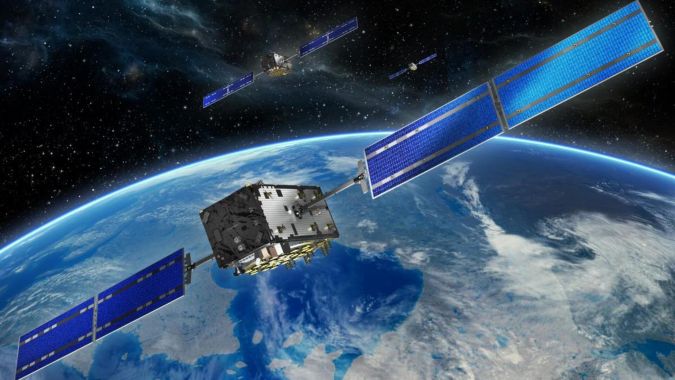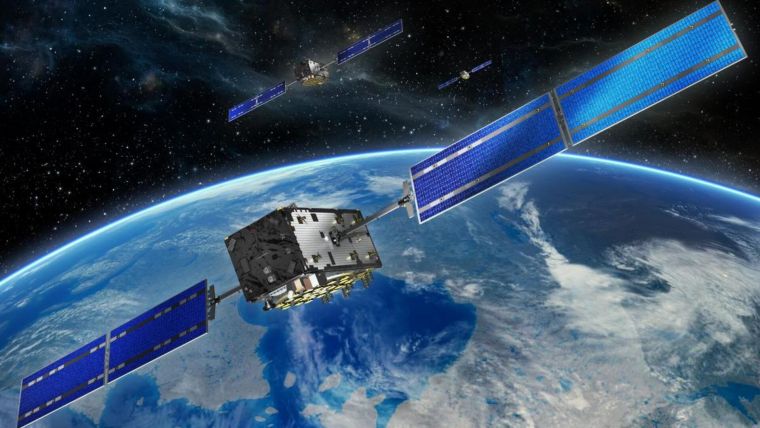One Decade of Galileo Satellites in Orbit
This month marks the tenth anniversary of the launch of the first two operational Galileo satellites. On 21 October 2011, Europe took a major step in its space history by launching the first two satellites from Kourou, French Guiana. On that day, the EU came one step closer to having its own Global Navigation Satellite System.
Galileo, the navigation and positioning system that is 100% financed by the European Union, has established itself as the world’s most precise global navigation satellite system (GNSS) and serves more than 2.3 billion users globally. To date, the constellation consists of 26 satellites orbiting the Earth at an altitude of around 23,000km. It is supported by a range of terrestrial centres and sensors across the globe.
Tackling societal challenges
Since the launch of the services in December 2016, the system has been going from strength to strength to become the backbone of a series of value-adding services that ensure the well-being of EU citizens and guarantee the Union’s autonomy and sovereignty.
Galileo is benefiting the European economy as 11% of the EU GDP is enabled by satellite navigation, according to experts. Thanks to the EU satellite navigation system, the Union has been able to boost its digitization strategy, support the EU Green Deal and drive economic growth. For instance, the use of Galileo in vehicles can reduce journey times by more than 10% and thus contribute to reducing emissions of harmful and polluting substances. Over the years, the European Union has seen a set of technological breakthroughs, from the eCall implementation in newly produced cars to the Galileo Return Link (RLS), a unique feature of the Galileo Search and Rescue service.
Towards Full Operational Capability (FOC)
At 00:35 (GMT) on 1 December, two new satellites are expected to lift off from Kourou French Guyana on a Soyuz rocket. The launch of these satellites will bring the programme one step closer to its full operational capability (FOC). This launch is taking place just a few months after the new Space Regulation entered into force. The regulation brings an improved governance between the European space actors and provides the necessary budget certainty for the next seven years.
Galileo is continuing to evolve. New services, currently under testing, will soon be available to users, opening up new market opportunities across various industries.
With the Galileo High Accuracy Service (HAS), Galileo will pioneer a worldwide, free high-accuracy positioning service aimed at applications that require higher performance such as drones and autonomous cars.
The Open Service Navigation Message Authentication (OSNMA) is set to contribute to the detection of GNSS attacks. This forthcoming service is an authentication mechanism that allows GNSS receivers to verify the authenticity of GNSS information, making sure that the data received does indeed come from Galileo and has not been modified in any way.

Robust 3D collaboration
With the European Commission at the helm, Galileo is the result of unprecedented cooperation between legislators, space industry actors and EU Member States. The European Space Agency has been a trusted partner in terms of designing the system architecture while the European Union Agency for the Space Programme (EUSPA), as exploitation manager, guarantees the provision of safe, secure, state-of-the-art services around the clock - not only to EU citizens, but also to a growing group of users around the world.
"At EUSPA, we are committed to taking the EU Space to the next level. Collaboration between EUSPA, the European Commission and ESA is the basis for this. Each partner has unique and complementary functions and competencies," says Rodrigo da Costa, EUSPA executive director.
Source: European Union Agency for the Space Programme (EUSPA)

Value staying current with geomatics?
Stay on the map with our expertly curated newsletters.
We provide educational insights, industry updates, and inspiring stories to help you learn, grow, and reach your full potential in your field. Don't miss out - subscribe today and ensure you're always informed, educated, and inspired.
Choose your newsletter(s)












